Thank you to the following local eateries for supporting us during November Hospice & Palliative Care Month!
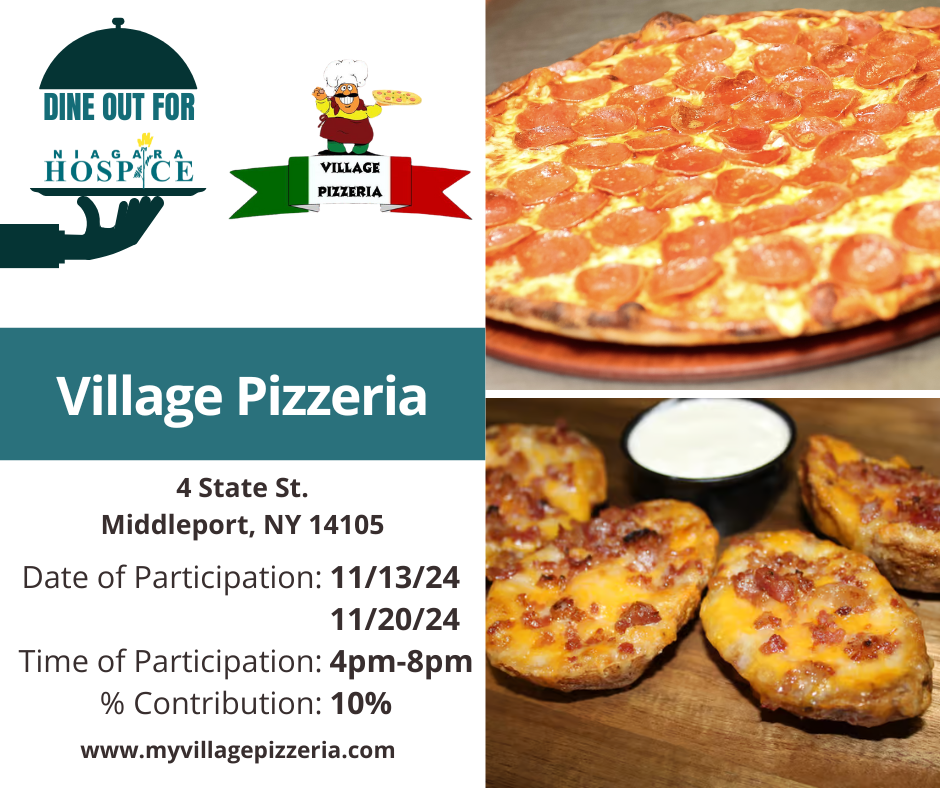
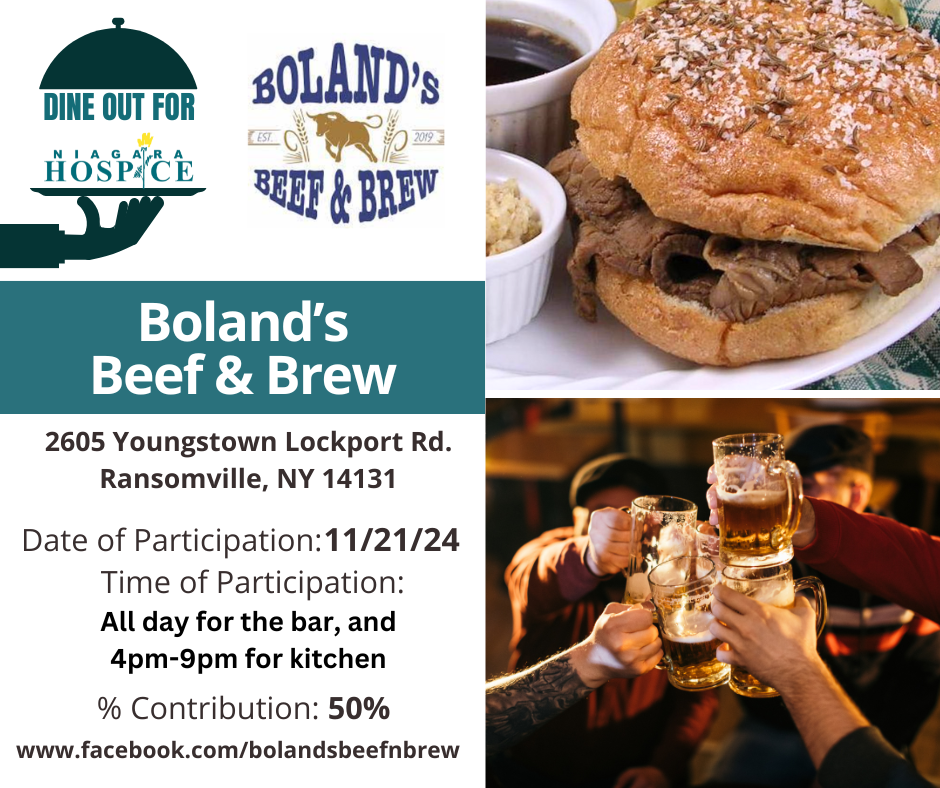
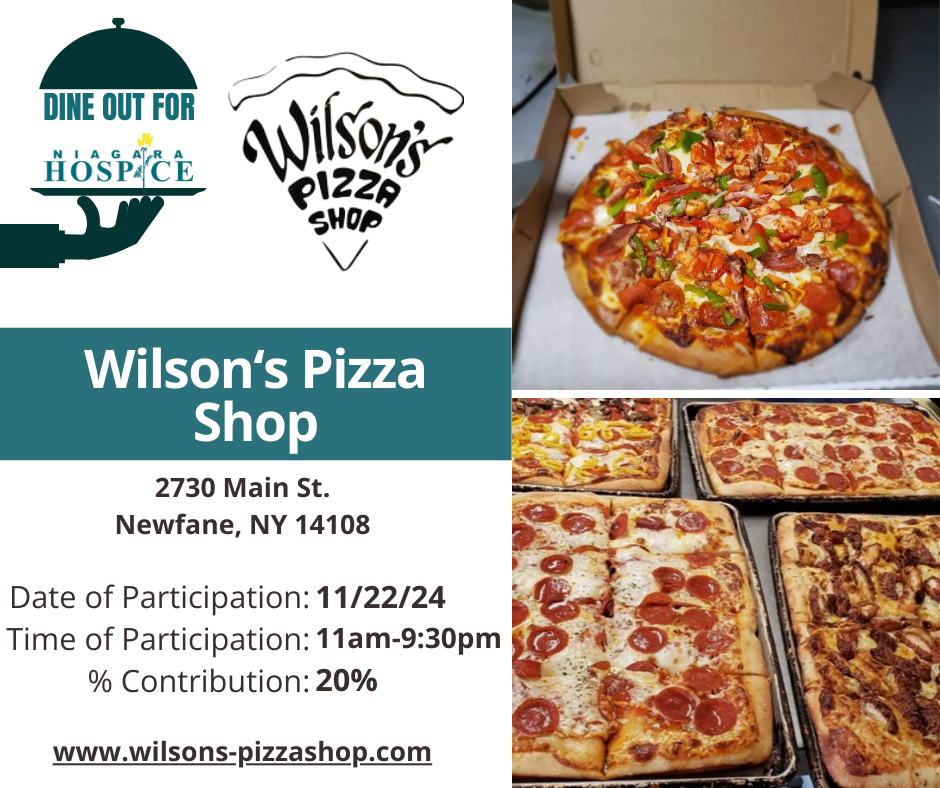
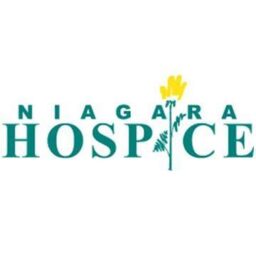
Thank you to the following local eateries for supporting us during November Hospice & Palliative Care Month!



Written by featured contributor: Doreen Alati
Change is an inevitable part of life. Some changes are exciting and welcomed; the miraculous birth of a baby, entering a new marriage, and the beauty of the shifting seasons. However, there are changes in life that are not welcomed. Changes that can leave one feeling confused, angry and hopeless. It is the change that happens when we lose a loved one and find ourselves in the throes of grief.
My grief journey began the minute my husband was diagnosed with cancer; a rare, aggressive type that left him mostly bedridden for 11 months. He fought hard, we fought hard, until a beautiful summer’s day in late August of 2020, when my husband and best friend of 40 years, took his last breath.
My husband was a generous man with an amazing heart. He cared for people and saw the good in everyone. He was faith-filled and always doing acts of kindness for people. So many stories came out after he passed away of how he touched others’ lives. And then, in an instant, he was gone, and nothing would ever be the same again.
I was unprepared for the intensity in which my heart would hurt, and the abruptness of how my life would be forever changed. At first, I felt relief that he was finally done suffering and out of the unbearable pain that comes with cancer. And then I went into shock and found myself completely and utterly grief stricken. I didn’t know where to go or who to turn to.
And then, within a few days, I received in the mail, a beautiful card, along with a brochure from the Niagara Hospice Bereavement Department. The brochure outlined their mission and their services, but what stood out the most were the words “We’re here for you.” I needed help and I needed it quickly, so I contacted the department immediately.
I was connected to a counselor who soon became my lifeline from drowning in a stormy sea. With each session, hope began to slowly emerge. In a safe space, and without judgement, I was able to express my feelings and emotions and was reassured that whatever I was feeling was okay.
I also sought out group support in addition to the one-on-one counseling through Hospice. I attended faith-based grief groups through local churches. I connected with other widows and began attending and co-facilitating widows support groups. As I continue to surround myself with others who have walked through grief and widowhood, I find comfort and hope.
My faith, my family, and my friends were, and continue to be my anchors. They lovingly and gently remind me that my life still has purpose. They encourage me to keep my eyes fixed on the positive, the good things. They help me see me that this is honoring to my husband’s memory, and that he would want me to keep going, keep hoping, keep loving.
My grief journey has taught me to take a really horrific and life changing situation and give it meaning. Meaning to me is finding your way after loss. Meaning is identifying that I am here, and what kind of purpose can I bring to the rest of my life.
There for others: I now find myself being more compassionate and empathetic to those who have experienced loss. I feel I am better equipped to love and support them and make myself readily available, at any time, to listen and to care. Love more: I cherish my relationships more and have a deeper commitment to friends and family and value the time we spend together…I am truly grateful for every moment. More open-minded: I am more receptive to new friendships and connections. Because of loss, through support groups, church, and other community related activities, new and exciting relationships are being built. A better perspective: I try not to sweat the small stuff as much and have gained a deeper understanding of what really matters in life.
Everyone’s grief journey is different and unique. No two people will have the same experience. Each person will navigate it on their own timeline and in their own way. For me, by surrounding myself with others, through support groups, community centers, faith-based organizations, etc., has been helpful.
Grief will always remain a part of me. But as time moves forward, I find the pain has begun to soften…the constant surge of the waves from the storm have become more stilled. The intensity has begun to shift from the forefront to the background…always there, but not as loud. It is less consuming now and has given rise to a greater sense of peace and the possibility of a future where hope can live again.
I continue to re- examine my loss in order to recognize how I’ve changed, and to feel good about these changes. I try to embrace them as a way to honor and remember the life and the love my husband and I shared. He will be forever missed; I will be forever changed.
Comments from the bereavement counselor, Mark Dailey
Each grief journey is unique and each journey share similarities. Doreen experienced a great upheaval on every level – Spiritual, Emotional, Physical, and Mentally. Loss throws us into a crisis mode. That crisis takes place on every level. It produces an identity crisis, a purpose crisis, a life-dreams crisis, and a time crisis. James Marcia, a clinical psychologist, did some interesting, and ground breaking work on Identity Development (centered on adolescents). His theories have some clear application to one’s grief journey. The heart of the theory is that our identity is the result of decisions we make in the situations in which we find ourselves.
When death pushes into our homes everything changes, everything! We are forced to rediscover who we are without the other. For decades it was Doreen and her husband, then suddenly her husband was gone and she was forced to discover who SHE was. Additionally, we must now find a new purpose in life, and for life. Doreen shared her struggle in finding that purpose. Those who are caregivers for extended periods of time often feel that they also lost their purpose, as caregiving ends. So on our journey we must seek ways to contribute in ways that are meaningful to self, such as helping others on their journey.
Death robs us of our future dreams and goals. The plans to travel, to be active and involved grandparents, to explore new and existing hobbies, or simply to spend time together. Those are gone, and now one must discover new visions of the future. Our last crisis involves time, the time we have left and what is important versus what is urgent.
As we read Doreen’s heartfelt story we can see her moving in and through all of these crises and in so doing, achieving her new identity. Our identities are the result of our decisions made in those times of crises. Doreen made the decision to be compassionate and empathetic – to give and support those on their journey. Also, she made the conscious decision on her journey to hold tightly to those in her world, as well as being open and receptive to new people and new experiences while focusing on what is important rather than the urgent.
It’s a journey no one wants to take, but at some point, we will take it. A journey one travels by themselves, but one you do not take alone as Doreen learned. Death brings great pain that we keep the rest of our lives, and it can produce great growth and strength in us that will guide us the rest of our lives.
by Heidi Truschel, Volunteer Services Specialist, Niagara Hospice
Nurses, aides, doctors, social workers, and counselors are all an important part of caring for patients at Niagara Hospice. There are other important, sometimes unexpected, roles that are performed by volunteers. Often, volunteers fill in all the remaining spaces with the most tender of touches. In doing so, these individuals often develop meaningful relationships with Niagara Hospice that last for years. Each month, we would like to shine a spotlight on our volunteers, their contributions, and what motivates them.
Time may be our most precious resource. So what makes volunteers want to contribute their time and effort to Niagara Hospice? How do they relate to our mission of providing comfort and care during difficult times? As you will see, for them, it’s important what happens on the inside. This emotional connection, and their experiences within Niagara Hospice, are why we’re calling this blog “On the Inside.” Here are some of the reasons why volunteers give:
Many volunteers feel a personal tie to Niagara Hospice. This may occur because a loved- one was served by our organization or a hospice elsewhere. Some volunteers participate because a death in their family left lasting beliefs and feelings that they have in common with Niagara Hospice. Our mission touches their heart and spirit, making them want to “pay it forward” for others. Their volunteering is a deeply felt expression of gratitude.
People may feel volunteering is a way to help move the community in the right direction. They may wish to lead in some way, or to role model something positive. Other volunteers may want to assure that a cause is going strong. For them, volunteering is a way to maintain a value itself – to assure that caring, hospitality, dignity, and other principles have a place in the world. Dame Cicely Saunders wanted to create a place where the terminally ill could receive relief from pain in order to live fully to their last day. She founded the first hospice in London, England to make that a reality. We carry on her legacy at Niagara Hospice.
Volunteering can be a way to use your skills and experience. Many of us have acquired special knowledge along the way that could benefit others. Whether you have pursued a hobby or performed tasks professionally, volunteering can be a way to share your passion and talents. Being productive can feel very satisfying.
Volunteering can help you meet new people and offer a sense of belonging. A decision to volunteer may be based on the same values and priorities as other volunteers. It’s an opportunity to meet like-minded, motivated people who add to the experience. Some volunteer assignments, such as fundraising events, can bring volunteers together to work on common goals.
Volunteering can provide opportunities to try new things and explore your community. Is there a skill you haven’t had the opportunity to put to use? Would you like to embark on a new career, but need to see how it works on the inside? Volunteering can introduce you to new roles or new approaches to helping people. At Niagara Hospice, volunteers choose what to get involved in, and how often. There are opportunities to shadow other volunteers performing tasks, learning from others until you are comfortable.
Niagara Hospice makes it our priority to assure that volunteers find a role that is a comfortable fit. Volunteers can choose whether to interact with patients, or to work behind the scenes. As you will see in future articles, there are many ways to help.
written by Valerie Occhipinti Gurnett, RN, MSN-Ed CCM
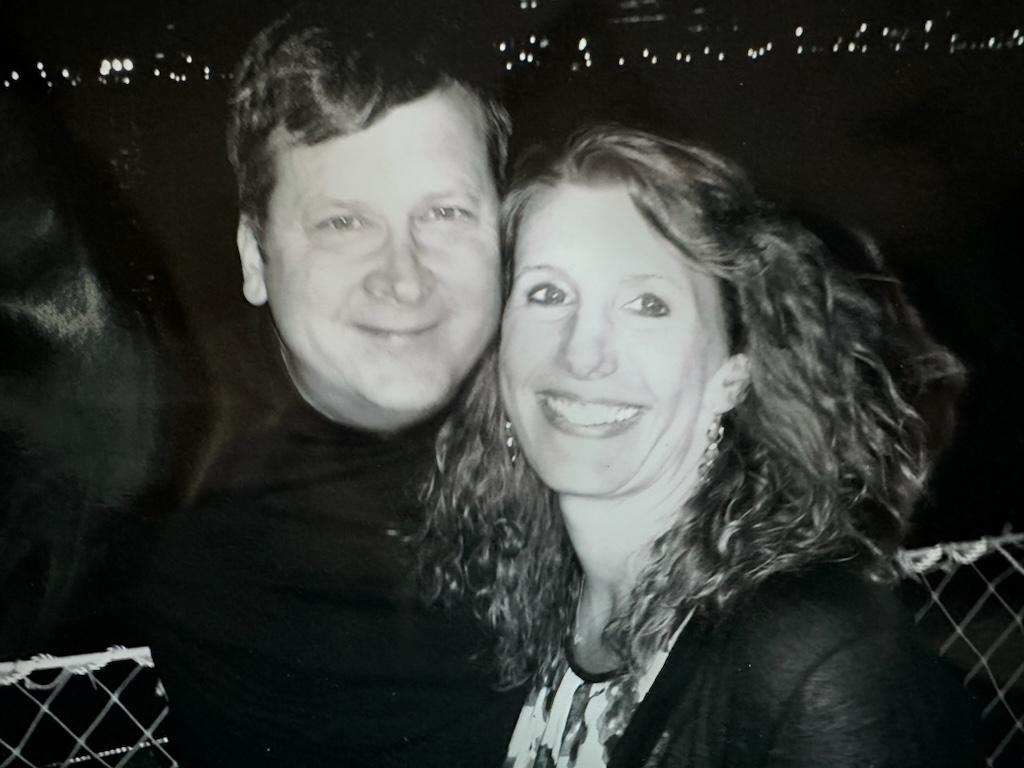
I am still here, and this is my story…..Mike was my cheerful, fun, and creative husband and bestie who kept me grounded. He was the guy who was a friend to everyone he knew; it didn’t matter to him what your background was or where you grew up, skin color, or rich versus poor. Once a person became his friend, he always kept track and put forth the effort to call and “shoot the bologna.” Mike believed in this and taught me that open communication is the life-giving oxygen that fuels relationships. You see, he came from a large, loving family and made me promise before marrying him that I would never sweep anything under the carpet. You might surmise that we had a beautiful relationship and were there for each other through thick and thin. Mike was diagnosed with an aggressive, hard-hitting form of cancer during the pandemic and had several complications following multiple surgeries. As a nurse, I am well aware there are times when, despite best efforts, medical can not repair every illness. Mike’s health declined, and death was upon us in March 2022. The following month, I healed from COVID-19 symptoms, and then the next storm front moved in as my healthy father sustained a life-threatening thalamic stroke. Meanwhile, my sweet mother’s health began to worsen, and she passed away at Christmas; I was unable to come up for air as they were all under my care. I lost my three favorite people, all within nine months of each other, in 2022. Time stopped, nothing made sense, peoples comments and platitudes started rolling in only to make me feel more alone and abandoned; it was as if no one understood.
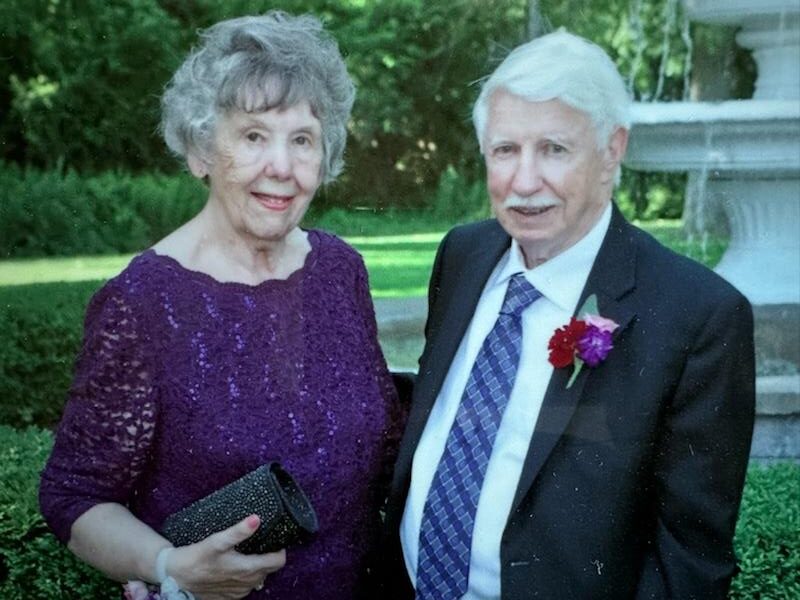
My healing journey and acceptance of multiple loss and agonizing grief began with the New Year 2023. According to Harris (2017), surviving tragedy presents us with a choice of whether to endure or become stuck, and I liken this to being suppressed under the carpet; Mike wouldn’t want me to do this. I made the choice to figure out how to carry this unrelenting grief, this gut-wrenching ache for reality to be different, and the awareness that “my three” will never come home or back. My journey comprised a million small steps to make life worth living. It took courage and a great deal of introspection to comprehend that it’s not one way or another way. Grief is not right or wrong; it is not black or white and is not about justice or injustice. I had to come to grips with the fact that grief’s cousins, anguish and sorrow, are a part of love; they are not separate countries; it is not one or the other. Grief is a love for self, for others, and for life. We can’t hold onto anything in this world, but we can hold onto love by carrying it through to live the life that has been asked of us. I learned that love has this way of linking us to what is now, what was once, and what is to come. It’s the same way that slow-paced songs are associated with sadness, and fast-paced songs are recognized with happiness. Musicians must learn to play both the sorrow and the joy in life.
I recall the morning of my hooding event as I finished graduate school; I was pacing back and forth in the cemetery, walking between my parent’s gravesite and my husband’s site. I couldn’t grasp how going to a happy occasion would be acceptable, “I lost my three favorite people, and they’re not here to see me graduate.” At that moment, pacing back and forth, I realized that my heart was big enough to hold space for sadness and happiness together. I realized that this is not a problem to solve; it’s more of a mystery to learn to carry with me. So, I went to the ceremony, holding a photo of each of my three people. Do you hear what I am saying? I was an emotional wreck, but steady, I established equanimity. As I stood on that platform I was filled with hope, you see our perseverance produces hope. Hope is an optimal state of mind; it’s where we start to expect good that positive things will come. You might not feel any hope or balance right now; I didn’t either, but it came, and someday, it will wash over you, too.
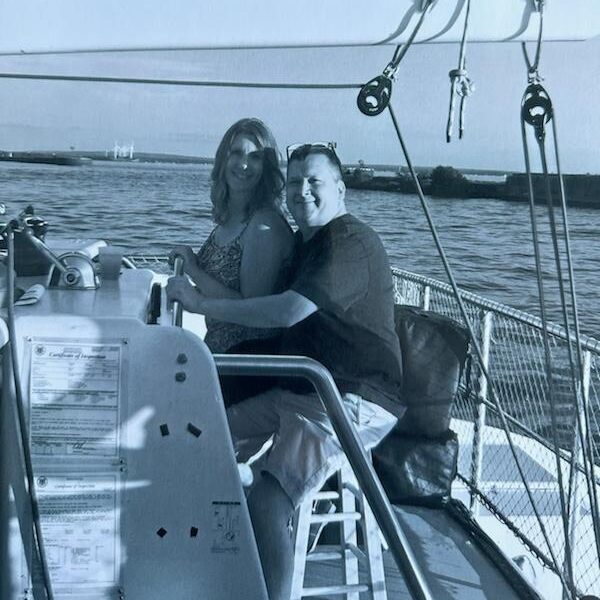
It takes much stamina to deal with every emotion that comes out of nowhere, as grief does not disappear, and to grasp the underlying feelings of each emotion. I wrestled with keeping space between myself and the various emotions. Realizing I would never be the person I was before meant that I needed to align my new self with my core values and beliefs. I had to discover what was important to me and what was important for me; there is a difference.
Don’t be afraid to ask yourself during the grief season to look at what makes things worse right now; what makes things a bit brighter for me? What brings me closer to myself? What small thing can I do that will soften this morning or get through this evening?
I found that daily affirmations were a powerful tool that allowed me to show myself compassion and love in a way that I never knew before. I would write simple phrases down on index cards and then say them out loud; hearing these positive statements created lasting changes in my mindset. Research has shown that affirmations create new neural pathways; it is similar to re-programming our brain in a good way. Piece by piece, I began to accept my new reality, and softness set in as I believed these phrases. For a time, my affirmations looked like this:
I say no to depression
I say no to discouragement
say no to despair
I say yes to love
I say yes to joy
I say yes to hope
I accept healing from the loss of my husband
I accept healing from the loss of my father and mother.
I will heal
I love myself no matter what has happened
I am open to receiving healing
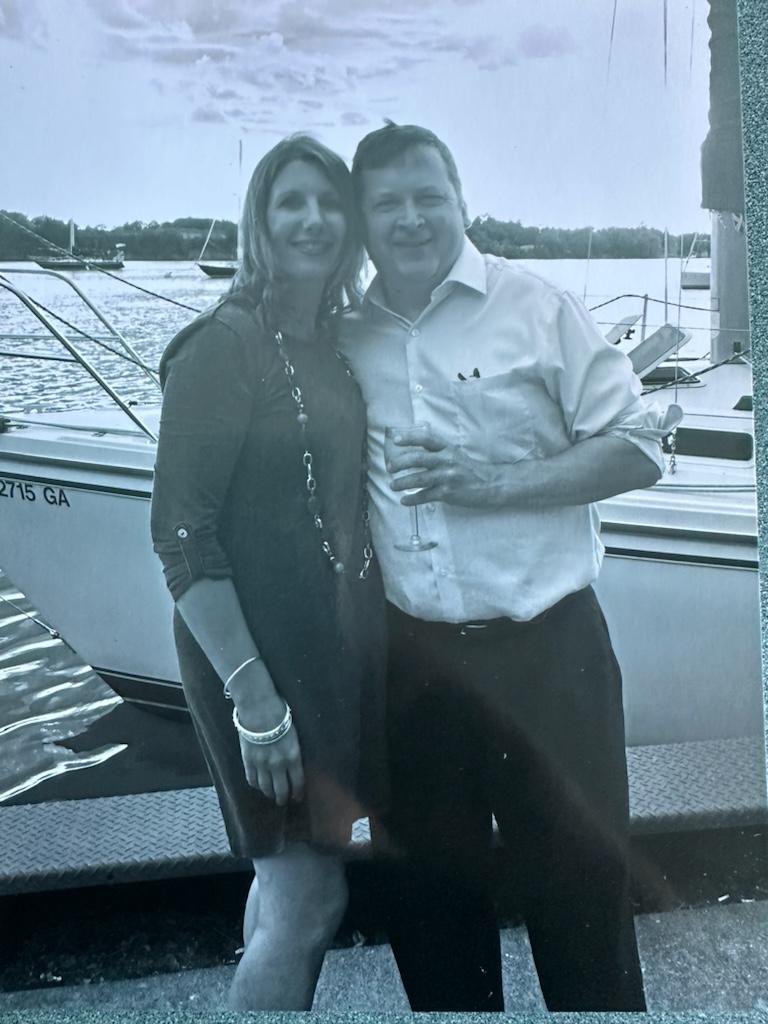
A gracious elderly friend taught me to place my hand on my heart to feel each beat. Doing so lets us know we are alive and we have purpose; it also signifies respect, honesty, and trustworthiness. Try placing your hand over your heart; can you feel each beat? Now, say a few affirmations aloud and notice the tranquility that will set in. Dr. Holly Oxhandler is a well-known social worker whose research centers around spirituality and mental health. Oxhandler 2022 discusses the importance of leaning in, processing, and becoming centered in prayer during the grief season. Centering on prayer allowed me to slow down and connect with my inner self and higher power; it helped me to loosen the grip on all that I could not control.
Like me, you will never be the same person ever again following the magnitude of grief and loss. I recognized the reason for “Why can’t I stay the same person”? This is because not only of a multitude of losses but, more significantly, all that was gained during the journey. I now know that if we give our suffering purpose, it will metamorphose into an unspeakable, powerful force for good in this world. Please know that you are so worth caring for and tending to the gift of your life while learning to carry grief and loss. Hospice bereavement counselors were there for me and they can help you too; they provided written materials and used active listening skills to support me. May peace be with you.
Valerie’s story is one of resilience and hope. Your story is one of courage and trust. Until a person is in the midst of deep grief one does not quite understand the bravery it requires to continue on. “I am still here,” is Val’s opening statement. An affirmation in itself. Affirmations are honest statements that can help one focus and gain inner strength in moving through life. When used consistently, affirmations can create lasting changes in your mindset, helping you to develop a greater sense of self-compassion and a more hope-filled perspective. As Val’s story illustrates, in the context of grief, affirmations can be a powerful tool for fostering healing, acceptance, and growth, providing comfort and support as you navigate the challenges of loss. There are a wealth of affirmation sources you can find in the book store or online, and these are solid resources. However, if you are able to create your own affirmations, based on your immediate emotions, struggles and hopes, these statements will have a greater impact as you repeat them to yourself. Val created affirmations as she journeyed through her grief, and at times would return to previous affirmations as they became relevant to her experience in the moment. Whether you create your own or borrow affirmations from another source, it is most beneficial to choose statements that speak to you personally, ones that resonate with your soul and are true to your immediate experience.
More examples of affirmations pertinent to grief include:
Just as each mourning person’s grief is unique to themselves, so too is the type of support that meets one’s needs personal and individualized. As we continue to bring you this blog, we will provide testimonies, ideas and resources to offer you options as you grieve. Some will speak to you, and others will not rest well with you. Accept the pieces that fit you, and let go the ones that do not fit. The most important take away this date is to permit yourself to grieve the way that best fits you and your loss. We honor your grief, and we wish you peace as you journey in courage and sorrow.
Niagara Hospice Grief Support Specialists will be here to help guide and support you, validate your feelings, facilitate your healing, and listen without judgment as you process the vast emotions of grief and adjust to the world without your loved one. Call (716) 280-0777 or email Bereavement@NiagaraHospice.org to learn more about our services.
The Hospice and Palliative Care Group Board (HPCG) of Directors announced that John Lomeo, President & CEO will be stepping down effective July 31, 2024.
The Hospice and Palliative Care Group Board (HPCG) of Directors announced that John Lomeo, President & CEO will be stepping down effective July 31, 2024.
Lomeo joined the organization in 2000 and over the course of 24 years, established Niagara Hospice as a national leader in end of life care. He built Niagara Hospice House that became a model for other Hospices nationwide. He established complimentary businesses to support the mission of caring, such as Kalos Health and Liberty Home Care. In 2000, the organization was caring for 40 patients per day. In 2024, the organization is caring for over 1,200 patients throughout all the counties of WNY.
The HPCG provides administrative services to Niagara Hospice, Kalos Health, Liberty Home Care, Hospice of Orleans and The Niagara Hospice Alliance.
“It has been my honor and privilege to serve this organization and the community. Throughout my career, I have tried to make a difference in people’s lives, I hope that will be my legacy. I would like to personally thank every employee, past and present for taking this journey with me. To my Board Members, thank you for supporting me and our vision to improve healthcare throughout WNY. Together we answered the call of duty.”
“When John Lomeo retires in July of 2024 he will be leaving behind a secure organization that has expanded, shown exponential growth and demonstrated exceptional quality of care. The community and the thousands of people served have been the beneficiaries of John’s leadership, foresight, vision, brilliant business acumen and deep compassion. As a primary founder of Niagara Hospice, I would add that John Lomeo not only fulfilled the hopes and dreams we had for hospice care, he exceeded them. On behalf of the Niagara Hospice Board of Directors, I thank John for his incredible journey with us over the past 24 years.”- Patricia L. Evans
The Board of Directors has also announced that Carlo Figliomeni, Chief Financial Officer & Chief Operating Officer, who has been with the organization for 18 years, will be promoted to the President & CEO position on August 1, 2024.
We thank our community for supporting Niagara Hospice for the last 35 years. For this year’s Winter Appeal, we have a goal to enhance and enrich quality of life for patients by creating The Memory Care Courtyard Garden at Niagara Hospice House. This courtyard would be a safe, secure and stimulating outdoor space tailored to this population, but also beneficial to all patients and families receiving care at Niagara Hospice House. Startup funds for this project have been secured through the fundraising efforts of the Jack Beatty Memorial Hospice Cruise and Clambake, and we are asking for your help to make the comprehensive project a reality.
“Patients with Alzheimer’s and related dementias can thrive in environments that decrease isolation, increase opportunities for independence and promote sensory engagement. The Memory Care Courtyard Garden would be comprised of various sensory features which are stress-relieving and promote physical and mental well-being for patients, while also providing a unique gathering and activity space for patients and their families.” -Dr. Richard Castaldo, Niagara Hospice Medical Director
Our goal is $75,000. This special garden will add significant value to our patients’ lives, and be a welcome complement to the specialized 24/7 expert care provided at Niagara Hospice House. Please consider giving to this important initiative which directly moves forward our mission of providing the right care, in the right place, at the right time.
Thank you.
Respectfully,
John Lomeo
President & CEO
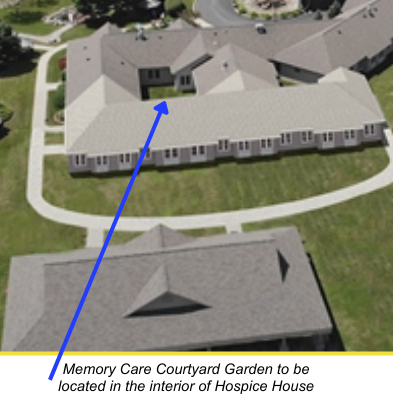
In November 2023, Niagara Hospice invited local restaurants to host a special Dine-Out for Hospice day to raise funds during November Hospice Month…it was a great success! Thank you to all who participated!
Niagara Hospice is happy to share more information about our services and organization on LCTV.
When patients with dementia and their caregivers struggle with trying to address constant agitation and stress, daily living activities can become very challenging. There are a variety of practical activities and habits that can supplement treatments and medications. By engaging loved ones in these routines, families can seek to attain optimal comfort in the face of unpleasant symptoms, difficult situations and feelings of isolation while also alleviating their stress.
Another major issue affecting dementia patients during the progression of the disease is sundowning syndrome; a state of confusion occurring in the late afternoon and lasting into the night. It can be caused by an urge to go the bathroom, thirst, hunger or pain. Boredom can also be a trigger for this behavior. Sundowning can result in a variety of different behaviors, such as anxiety, aggression, depression, ignoring directions, pacing or wandering.
For people living with dementia, one of the biggest factors in combating these adverse circumstances is providing sensory engagement. These measures can be instrumental for patients, families, caregivers and health care providers. They work together to develop the best care plan and tailored solutions for each situation toward countering the physical and emotional impacts that correspond with each type of illness.
Dementia-oriented sensory engagement (D.O.S.E.) is a non-pharmacological approach that can alleviate the above conditions and contribute to creating more positive outcomes in patient comfort and quality of life. In addition, these measures can serve as much-needed support tactics to caregivers under duress. Sensory stimulations like pet or music therapy and physical therapy can ease the unpredictable, demanding effects of dementia illnesses. Accommodating patient preferences, strengths and abilities can also result in reframing Alzheimer’s and dementia outcomes to reward and encourage patients rather than restrain them through trying circumstances.
Therefore, activating any type of sensory interventions may remedy certain unmet needs, desires or interests related to daily activities. Creative memory-driven activities are meaningful in engaging patients’ body, mind and social instincts and represent important non-pharmacological approaches to each respective disease state. While a good diet, adequate sleep and regular companionship are essential to managing a patient’s condition throughout the disease progression, there are other ancillary routines to consider in the care plan and creation of new habits.
The variety of cognitive-stimulating activities, including reading, playing games, walking and participating in social gatherings play a vital role in re-shaping how individuals feel. Regular involvement in these pursuits help avoid a descent into a sense of helplessness and despair. Even playing a patient’s favorite music from the past or watching old movies can enhance their psychological health, mood or overall demeanor towards others.
Sensory Activity Assessments & Recommendations
To measure how sensory activities can impact patients and caregivers dealing with dementia, the clinical staff at Pathways Palliative Care looked at baseline behaviors and symptoms and then monitored outcomes from routine changes and the introduction of new activities.
We developed a questionnaire to assess 10 patients in Niagara County with a dementia-related diagnosis who are enrolled in a home-based palliative care program. The patients’ ages ranged from 69 to 93 years old and they all have a form of dementia, Alzheimer’s or Parkinson’s diagnosis.
This survey aimed to discover non-pharmacological approaches to assessing the disease state and the frequency of use of interventions related to cognitive stimulation activities, physical exercise, Mediterranean diet, social interaction and use of reminiscent therapy. The survey also included scales to measure daily routines, sleep interruptions, mood issues and average daily pain levels. The goal was to determine whether these interventions improved outcomes and lowered caregiver stress levels.
A social worker completed the survey in the patient’s home with the patient and primary caregiver present. In all cases, the primary caregiver provided answers to each question. Two questionnaires were completed at different intervals, two months apart, to determine whether interventions and suggestions were implemented and if the recommendations decreased the patient’s behavioral issues and lightened the burdens of the caregivers.
Positive Patient Behavioral Outcomes
The results of this non-pharmacological D.O.S.E. approach to changing some lifestyle habits and socialization activities demonstrated a difference in better stabilizing the patient’s condition and erratic personality tendencies.
Physical activity such as walking, getting quality sleep and maintaining a better diet proved to be significant in producing positive outcomes for emotions and symptom management. Socialization, being productive and learning through playing games and listening to music as well as staying connected with family members and friends all yielded dramatic improvements in patient comfort and attention to their surroundings. The assortment of sensory activities also addressed other areas of the dementia disease state. Increasing positive emotional experiences and decreasing negative ones overall will reduce depression and aggressive outbursts.
The overall aim for any program serving people with dementia-related illnesses is to produce more positive interactions for patients and caregivers while documenting the overall health outcomes and behavioral changes that any non-pharmacological approaches provide.